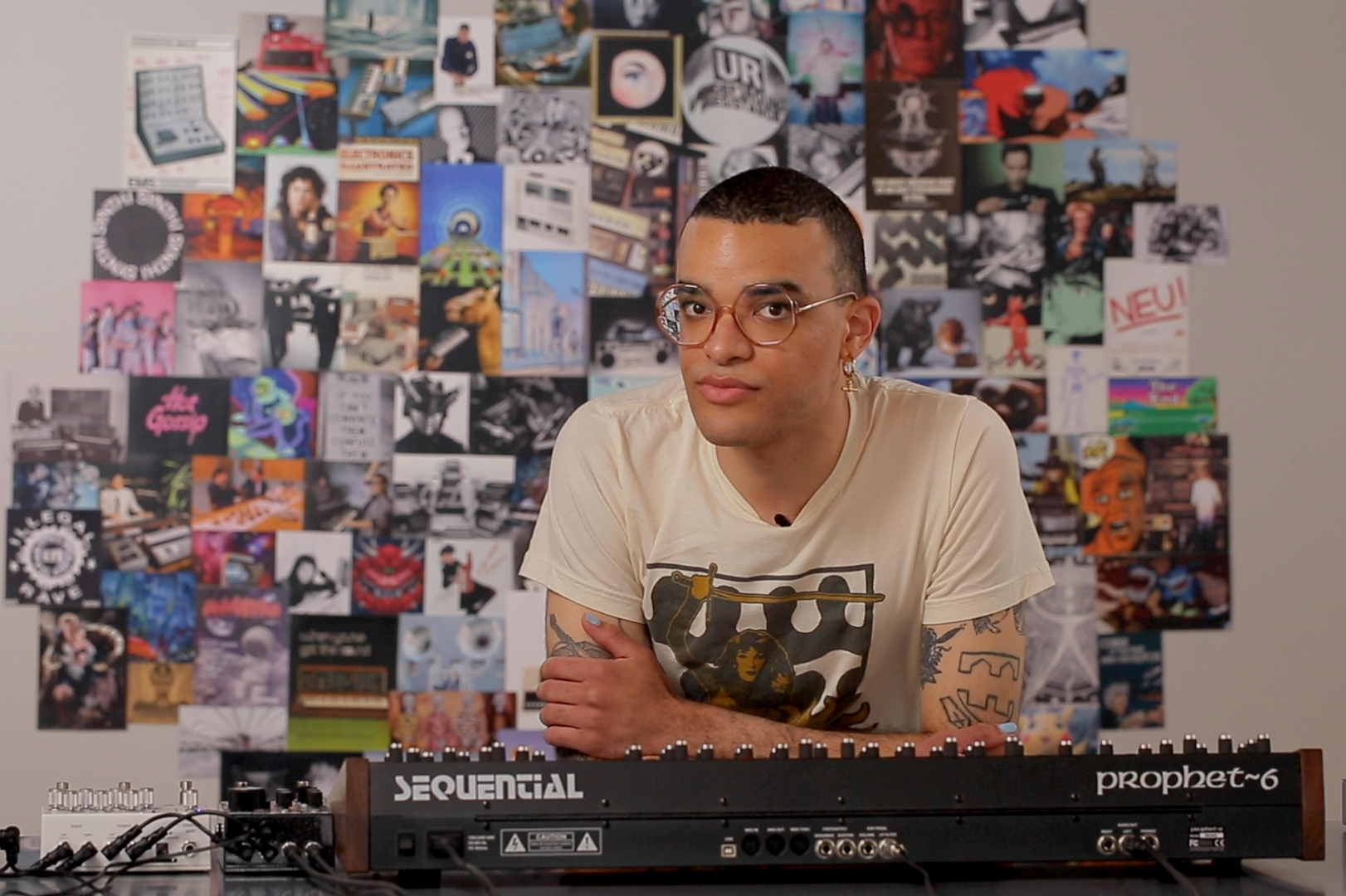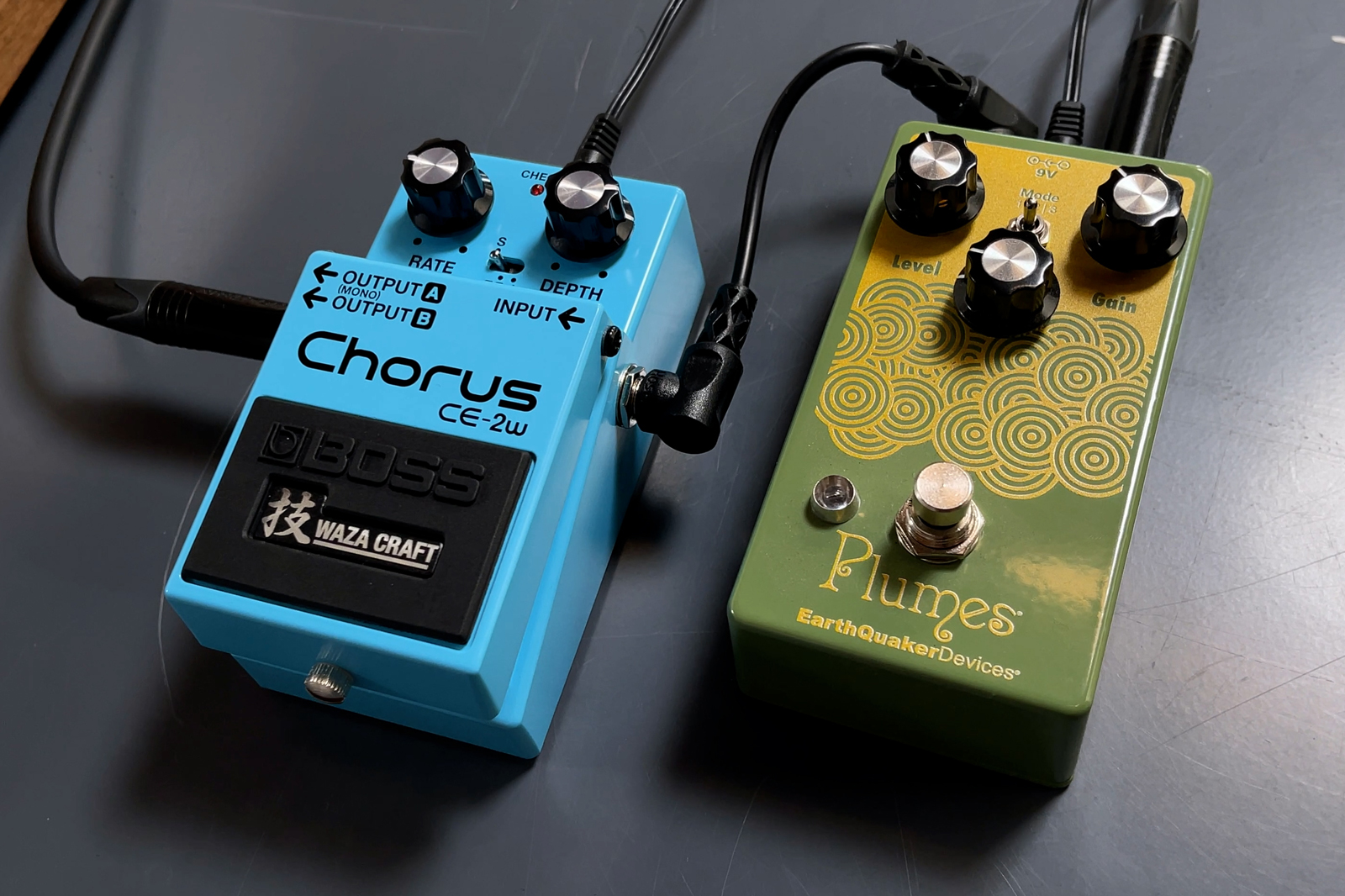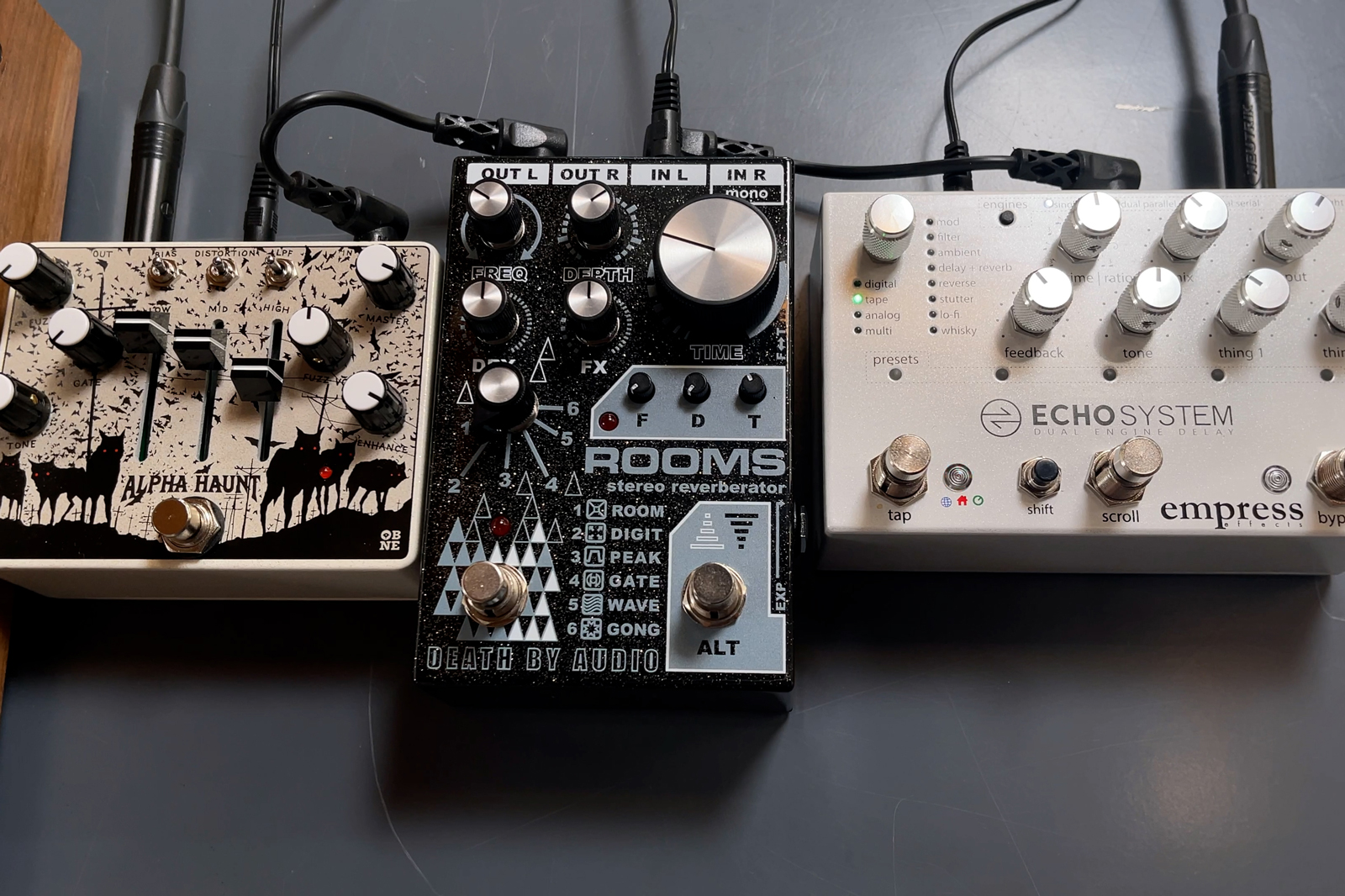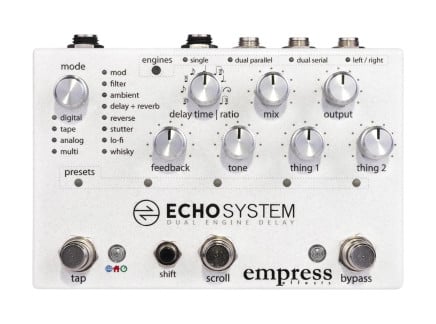What happens when the drifting and mesmerizing tones of shoegaze usually produced by heavily effected guitars are performed on a synthesizer? Well, in many ways, the sound of the indie adventurers Moaning may hold an answer to this question, as the trio have found a balanced approach of transmuting their influences into a very unique and distinct voice of their own. The person commonly responsible for their beautifully temperamental synth parts is Pascal Stevenson, who is also the band's bassist. Curious about their workflow and sound design strategies, we invited Pascal to our studio to talk about the techniques and gear combinations they use to arrive at such stunning results. For our video Pascal brought in their synth of choice, Sequential's Prophet 6, and a modest but robust selection of stompboxes. Without further ado, let's dive in.
Deconstructing Shoegaze
For anyone who appreciates that timeless sound of raucous and moody guitars that set bands like My Bloody Valentine and Slowdive apart from the rest of rock music in early 90s, what Pascal brings to the table may seem aptly refreshing for the golden age of synthesizers that we are living in today. And it feels like a natural evolution of the sound of neo-psychedelia for the technologically advancing society. After all, it is no secret that synthesizers are a perfect tool for creating a variety of sounds, and in some way can be seen as a shapeshifter in the world of musical instruments. Presumably, it is relatively easy to imagine any music genre reinterpreted through the wide lense of sound synthesis. Historically it appears that in some cases when a genre kept its essence, but added synthesizers into the mix that forced a 'post' prefix to be attached to it—post-punk, post-rock, post-metal. Following this logic, may it be that the sound of Moaning may be described as post-shoegaze? Clearly, there is no way you can look at your shoes or pedalboard on the floor when you have a synth in front of you. Then it makes sense to ask: what is the essence of the shoegaze sound?

The short answer to this question is three things: certain combinations of effects, particularities of musical language (chord progressions, voicings), and technique. This in no way means that guitars are not an important element there, but the point is that by changing the sound source we can create variations of the desired aesthetic. We are not after creating the same sound, but rather after finding ways to explore that particular sonic realm creatively. Thus before we move towards analyzing the essentials of shoegaze, let's briefly stop to address the source signal itself.
Although once we put our hands on a powerful synthesizer, intuitively we may want to start designing complex and evolving patches, Pascal suggests a rather subdued approach of keeping the synth sound as simple as possible, and let the effects pedals do the heavy lifting. This makes sense if we consider that the original instrument used in this context—guitar—has a defined harmonic structure, and making the synth sound extremely complex will move us away from the desired result.
The Recipes
Now that we have decided on the sound source let's look into the other elements. Understandably, the content itself is a major contributor to the overall sound and feel of shoegaze. While it is beyond the scope of this article to go into the details of music theory and the different moods that various harmonic relationships ought to invoke, we can say that it is worth analyzing the chord progressions of your favorite songs, and extract recurring patterns. Pascal mentions that when they are after a particular sound, they try to transfer the chord voicings used on the guitars to the keyboard as close as possible.
The technique plays an important role too. For example there are certain aspects of guitar playing that are very difficult if not impossible to translate to a keyboard interface. Something as simple, and natural as strumming on a guitar is clearly a roadblock on a synthesizer. We can, however, do what we can to implement things that are translatable. For example, to recreate the whammy swings that are distinctive of Kevin Shields' signature sound Pascal employs the aftertouch feature on Prophet 6 assigned to the frequency parameters of both oscillators.

Each of the examples presented by Pascal in our video utilize a unique ensemble of pedals, offering a variety of distinct moods and sonic flavors. In essence, the sound we are after can be helped by combining in various ways different kinds of effects: overdrive/distortion, delay/reverb, and chorus/flanger. What is important to stress here is that the routing of pedals plays an important role, and sometimes our common expectations of 'what goes into what' need to be surpassed for the benefit of getting the sound right. In one of the examples the artist's setup comprised Boss CE-2W chorus, Empress Echosystem multidelay, and Rooms reverb by Death By Audio—all connected to each other in that exact order. The result as you may hear is reminiscent of the dream pop vibes of Cocteau Twins, which, let's admit it, is kind of shoegaze sans distortion.
 This chain of effects is inspired by the sound of Kevin Shields (My Bloody Valentine)
This chain of effects is inspired by the sound of Kevin Shields (My Bloody Valentine)
The next example features a chain of pedals that aims to revive the unique sound of My Bloody Valentine. It starts with the Empress Echosystem running an 'Old Tape' algorithm, then the signal flows into a DBA Rooms reverb, and finally ends up in the ruthless Alpha Haunt fuzz from Old Blood Noise. This strategy to first build an ethereal soundscape with reverbs and delays, and then disintegrate it using a fuzz or distortion at the end of the signal chain is a classic Kevin Shields approach, and Pascal demonstrates that it works perfectly well with synthesizers too. One thing the artist does recommend is to use a volume pedal before the fuzz, as stompboxes initially tailored for guitars can potentially 'freak out' and misbehave with synthesizers, as the instrument's level is significantly higher.
In the next example, the Prophet 6 is routed into the Plumes overdrive by Earthquaker Devices to add some dirt, the Echosystem remains in the middle, and the EQD Pyramids stereo flanger finishes things off with a magnificent sonic swirl. Pascal uses this effects combo to aid a groovy and petulant post-punk tribute. Here, a certain strength of a keyboard instrument shines, offering an occasional freedom of one hand to manipulate controls on the synth and the effects pedals, which is much more difficult to do on a stringed instrument like guitar where both hands are pretty much constantly occupied.
While this article and the video demonstrate only a few examples for recreating the sound of shoegaze with synthesizers and effects pedals, we hope that they serve to inspire you to continue the explorations on your own. Whether you are trying to recontextualize, and refresh your favorite sounds from the past with modern tools or find a new golden combination of sounds, experimentation shall prove to be a rewarding path. We can say the same thing in a variety of different languages, keeping the meaning while altering the flavor. So change up your setup, and create a new musical language of your own.










